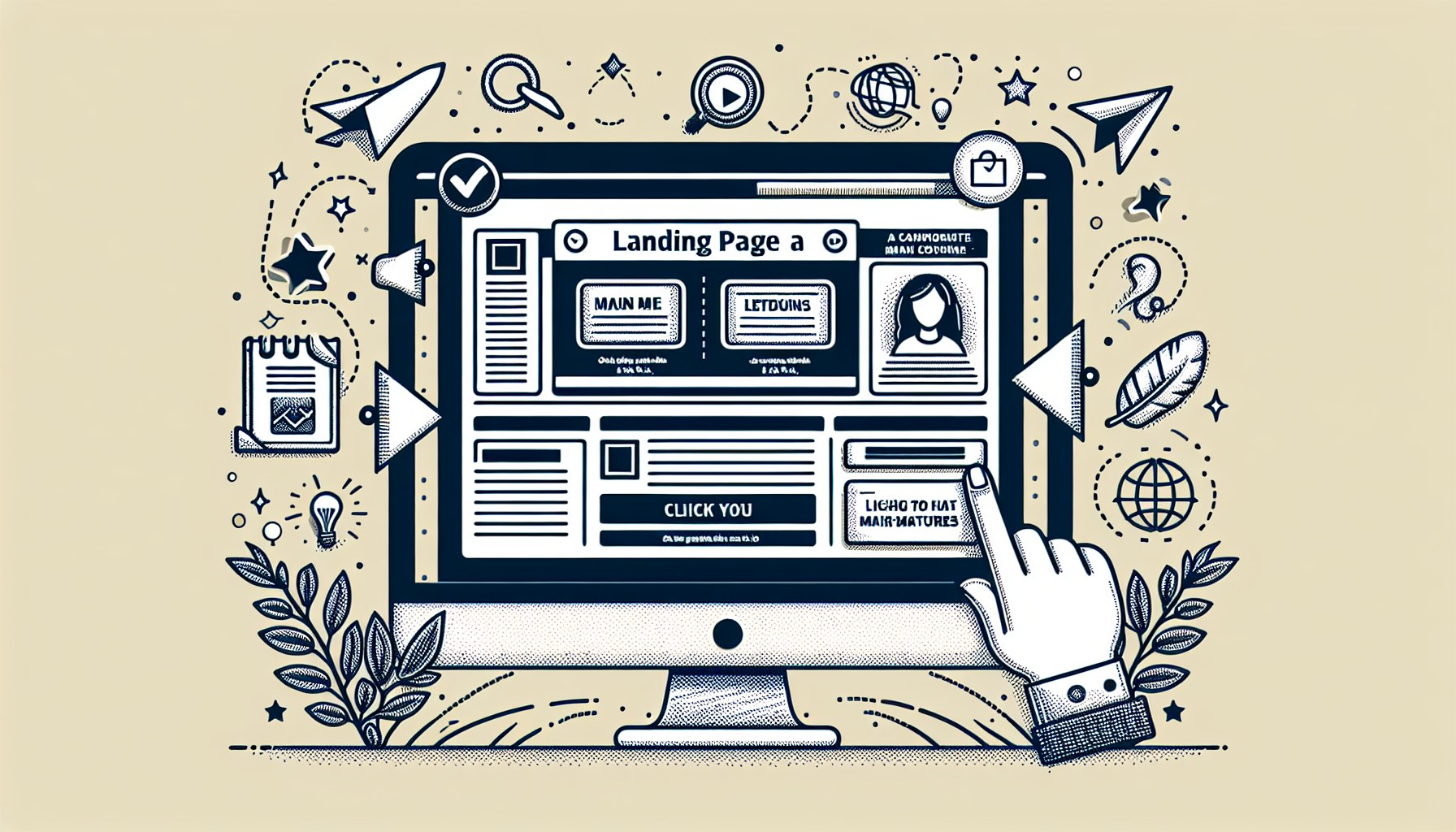
Landing page: The heart of successful online marketing campaigns
A landing page is much more than just another page on a website. It is a specially developed tool that is at the heart of online marketing campaigns. The aim is to guide visitors towards a specific action – be it the purchase of a product, filling out a form, subscribing to a newsletter or downloading a file. A well-designed landing page can make the difference between a successful campaign and one that delivers hardly any results.
What is a landing page?
In contrast to regular websites, which often offer a variety of information and navigation options, a landing page is deliberately focused. It is created specifically for a marketing campaign or a search engine ad and pursues a single, clearly defined goal: conversion. Visitors usually reach the landing page via an advertising link, an entry in the search engine results (SERPs), an email or social media ad.
A key feature of landing pages is their isolation from the rest of the website navigation. This means that distractions are minimized in order to direct the visitor to the desired action. Every component of the page – from the design to the text to the images – serves to persuade the visitor to perform the desired action.
The functions and goals of a landing page
The main task of a landing page is to lead the user along a clear and logical path that ends with a conversion. These include:
- Presentation of an offer: Whether a special discount, a new product or registration for a webinar – the landing page provides all the information the user needs to make a decision.
- Focused user guidance: In contrast to conventional websites, the landing page offers no navigation menus or links that could distract the visitor. It concentrates exclusively on promoting the desired action.
- Increasing the conversion rate: A well-optimized landing page can significantly increase the conversion rate. Clear messages, strong visual elements and compelling calls-to-action (CTAs) increase the likelihood of visitors becoming customers or leads.
Types of landing pages
There are two main types of landing pages, each used for different purposes:
- Click-through landing pages:
These pages are designed to redirect the user to another page where the conversion takes place. They are often used on e-commerce websites, where they take the user to a product page.
- Lead generation landing pages:
These pages aim to collect contact information from visitors in order to generate leads. They typically contain a form in which the user can enter their details such as name, email address or telephone number. Lead generation landing pages are particularly common in B2B marketing strategies.
Components of an effective landing page
A well-designed landing page combines several key factors to achieve maximum impact:
- A clear and concise title:
The title is the first thing the visitor sees and should immediately attract attention and convey the benefits of the offer.
- Convincing subtitles:
In addition to the title, the subtitle deepens the main message and briefly explains why the offer is valuable.
- Visual elements:
High-quality images, videos or graphics can visually emphasize the offer and support the message of the page.
- Call-to-action (CTA):
A strong and eye-catching CTA is crucial. It should be clearly formulated, such as “Buy now”, “Learn more” or “Sign up for free”, and visually highlighted.
- Benefit-oriented content:
The text should emphasize the added value of the offer and clearly show how the user benefits from it.
- Social proof:
Customer reviews, testimonials or logos of well-known partner companies can create trust and increase the credibility of the site.
- Forms:
For lead generation pages, forms should be short and user-friendly in order to minimize the hurdles for the user.
- Mobile optimization:
Since many users access landing pages via mobile devices, mobile optimization is essential. The page should work perfectly on all screen sizes.
SEO and landing pages
Landing pages also play an important role in search engine optimization (SEO). Targeted optimization with relevant keywords, fast loading times and a high level of user-friendliness can help ensure that the page ranks well in search results and attracts qualified traffic.
The use of long-tail keywords is particularly effective here, as they address specific search queries and often have less competition. In addition, landing pages can gain even more visibility through targeted backlink strategies and integration into paid advertising campaigns.
Performance measurement and optimization
The performance of a landing page should be analyzed regularly in order to identify opportunities for improvement. Important key figures are:
- Conversion rate: The percentage of visitors who perform the desired action.
- Bounce rate: Indicates how many visitors leave the page without interacting.
- Dwell time: Shows how long a user stays on the page.
- Click-through rate (CTR): Measure how many users click on the CTA.
A/B tests can be used to test different versions of the landing page to find out which elements work best.
Conclusion: The importance of the landing page
A landing page is an indispensable tool in modern online marketing. It offers a clear and targeted opportunity to convert visitors into customers or leads. By focusing on a specific goal and its strategic design, it can have a significant impact on the success of a marketing campaign.
Although the creation and optimization of landing pages requires time and resources, this effort pays off in the long term. With the right content, a convincing design and a clear call to action, landing pages can not only increase the conversion rate, but also strengthen the trust and loyalty of users to the brand.